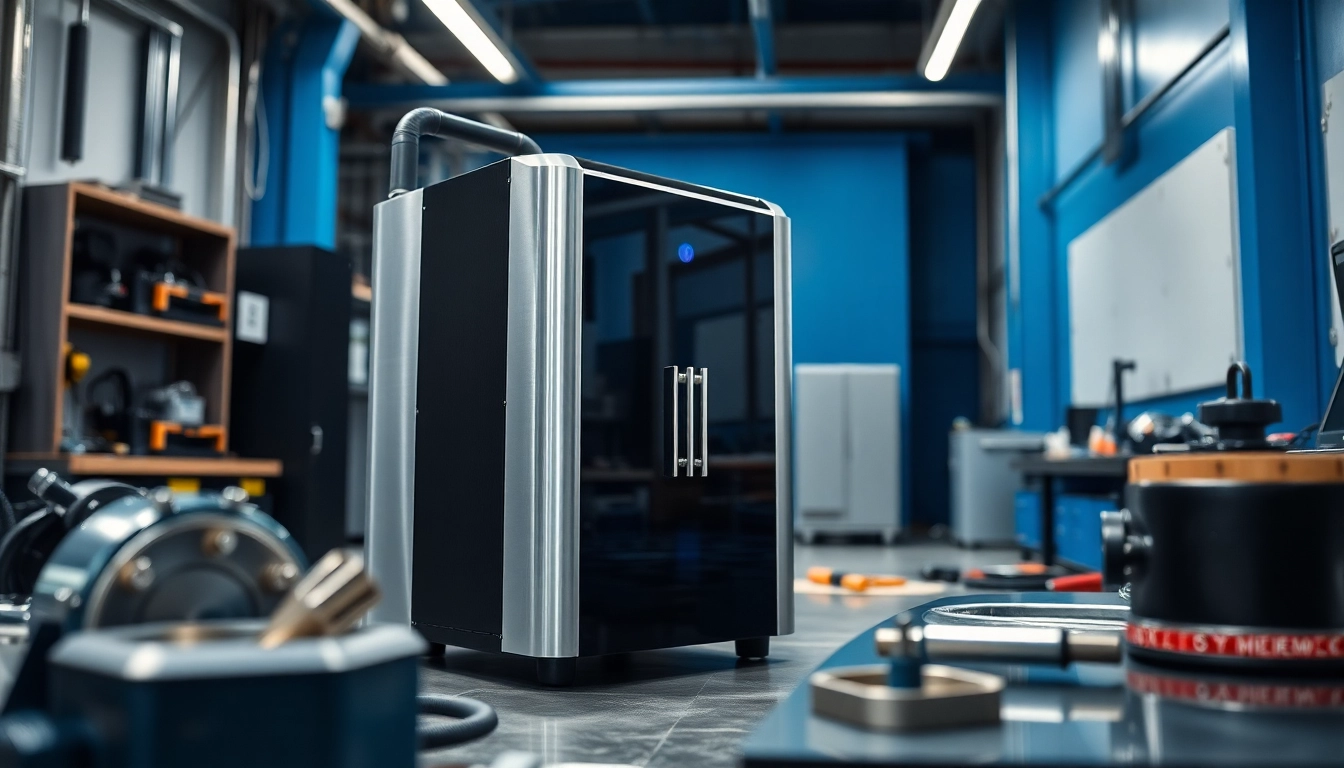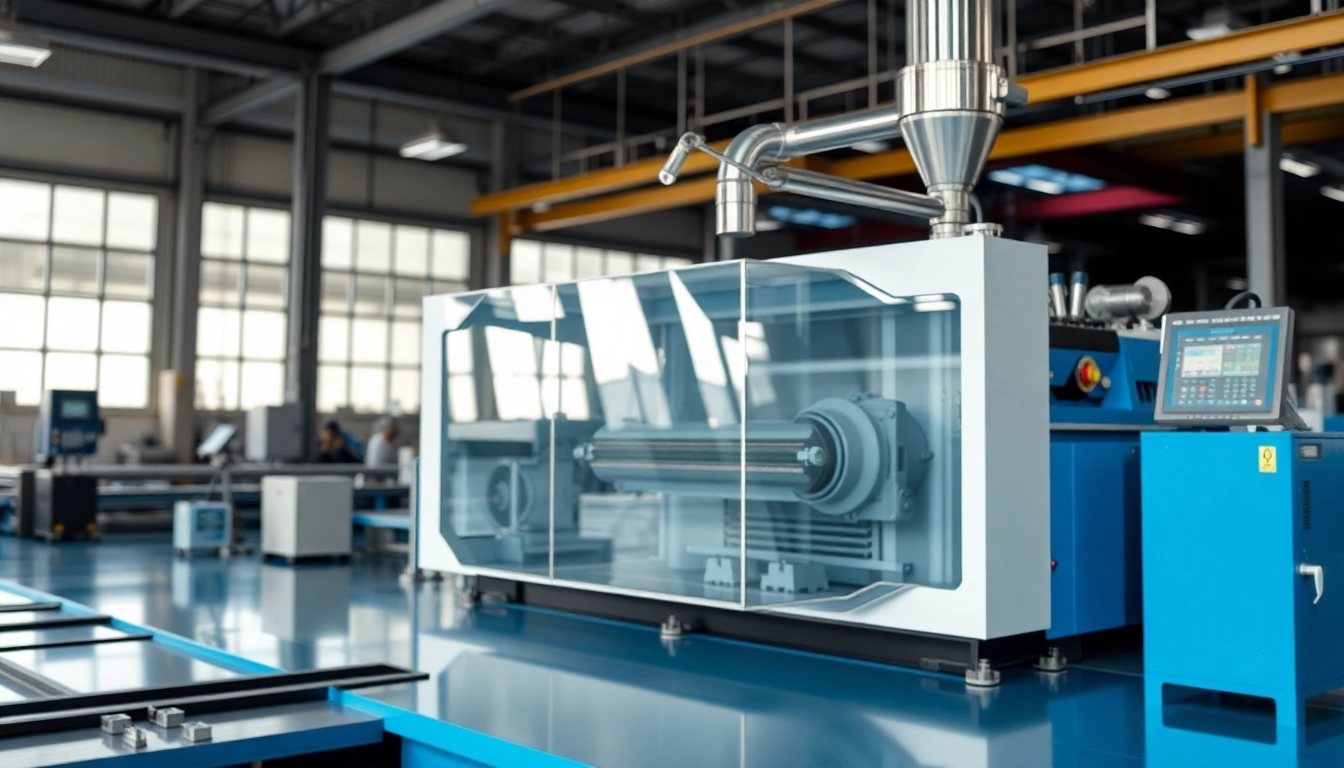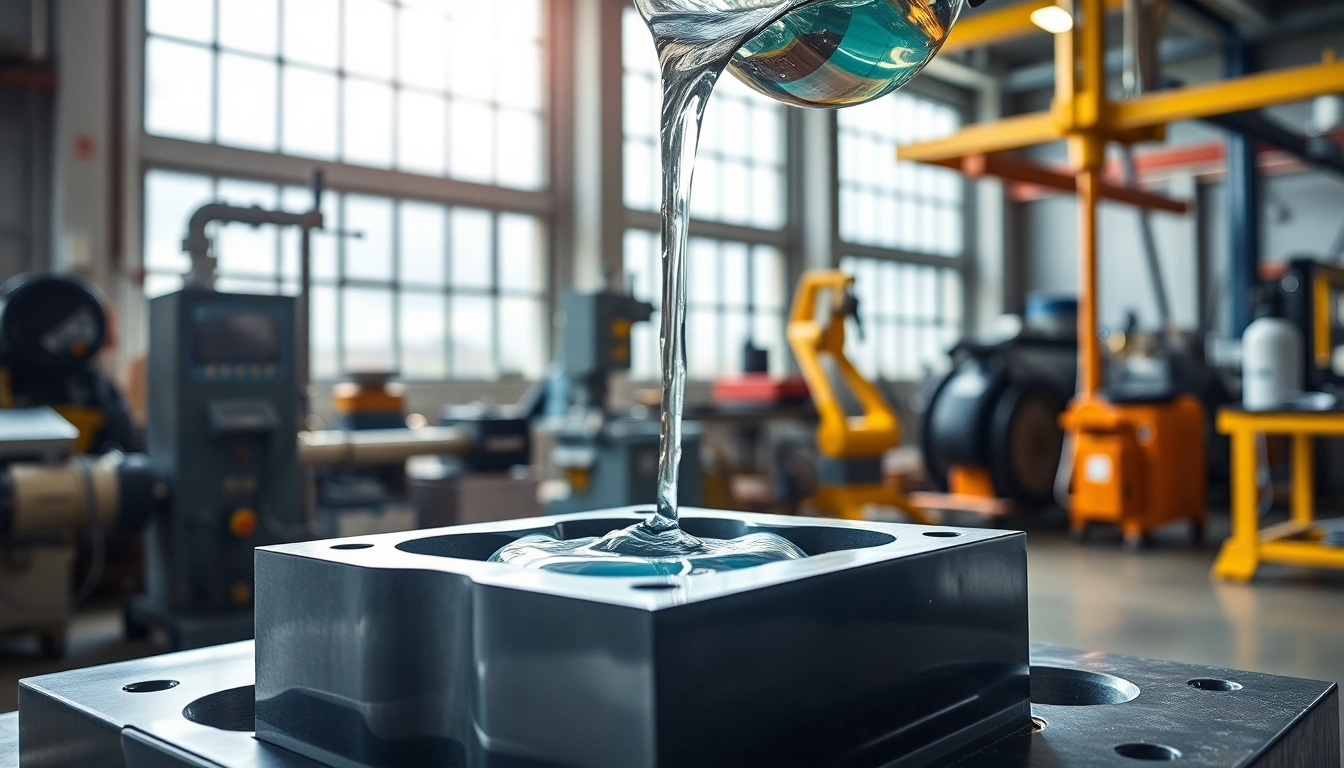Introduction to Laser Cleaning Machine
As industries progressively shift towards advanced technologies for maintenance and cleaning, the Laser cleaning machine emerges as a frontrunner in the quest for efficient and effective surface preparation. This modern device not only adheres to high cleanliness standards but also offers an eco-friendly alternative compared to traditional cleaning methods. In this article, we will explore everything there is to know about laser cleaning machines—including how they work, their diverse applications, and their future potential in various sectors.
What is a Laser Cleaning Machine?
A laser cleaning machine is an apparatus that utilizes high-intensity laser beams to remove contaminants, debris, and oxidation from various surfaces. It represents a leap in technology, enabling users to target specific areas with precision without damaging the underlying material. The laser cleaning process is characterized by its efficiency, versatility, and minimal environmental impact, making it a valuable asset in both industrial and conservation settings.
How Laser Cleaning Machines Work
The primary function of a laser cleaning machine involves directing concentrated beams of light onto a surface, which creates a high level of energy that breaks down unwanted materials. The process typically involves three main components: the laser source, the optics system, and the control unit.
- Laser Source: This is the heart of the machine, responsible for generating the laser beam. Common types of lasers used include fiber lasers and CO2 lasers, each offering unique benefits depending on the application.
- Optics System: This component directs the laser beam towards the targeted area. The optics can be adjusted to control the size and focus of the beam, allowing for precise cleaning of intricate surfaces.
- Control Unit: Modern laser cleaning machines are equipped with advanced software, enabling operators to program cleaning parameters such as pulse duration, intensity, and scan speed, ensuring optimal results for different tasks.
As the laser beam strikes the surface, the energy converts into heat, causing contaminants to either vaporize, melt, or be ejected from the substrate. Some applications may release particles that are then captured by a filtration system, ensuring a clean workspace.
Advantages of Using a Laser Cleaning Machine
The adoption of laser cleaning machines offers numerous advantages across various applications:
- Precision: Laser cleaning allows for selective removal of unwanted materials with minimal effect on the underlying substrate.
- Eco-friendly: This technology uses no harmful chemicals or abrasive media, significantly reducing environmental impact.
- Minimal Waste: The process generates little to no waste material, making it a more sustainable option.
- Enhanced Safety: With the ability to automate processes and utilize non-contact methods, the risks associated with traditional cleaning methods are considerably reduced.
- Versatility: Laser cleaning machines can be used on various materials, including metals, plastics, and concrete, making them applicable across multiple industries.
Applications of Laser Cleaning Machine
Industrial Cleaning Applications
In the manufacturing sector, maintaining equipment cleanliness is pivotal for maximizing performance and extending equipment lifespan. Laser cleaning machines have found extensive use in:
- Rust Removal: Effectively removes rust from metal surfaces without damaging the substrate.
- Paint Stripping: Quickly strips paint and coatings without the need for harsh chemicals or abrasive processes.
- Surface Preparation: Prepares surfaces for welding or painting by removing contaminants that could hinder adhesion.
For example, auto manufacturers increasingly adopt laser cleaning to ensure that components are free from impurities before assembly, which improves production quality and reduces rework costs.
Architectural Restoration with Laser Cleaning Machine
Laser cleaning technology plays a crucial role in the preservation and restoration of historical structures. The delicate operation allows the removal of grime, pollution, and biological growth without harming the original materials. For instance:
- Stone Cleaning: Removes pollutants like soot and mold from stone facades, restoring the natural beauty of historical buildings.
- Bronze Sculpture Restoration: Safely cleans intricate details of sculptures to preserve artistic integrity.
Projects often involve sophisticated assessments to ensure the laser parameters are optimized to avoid damaging delicate surfaces while achieving effective cleaning outcomes.
Environmental Benefits of Laser Cleaning Machine
Laser cleaning machines offer distinct environmental advantages, positioning them as a preferred option in an increasingly eco-conscious landscape:
- Reduced Chemical Use: Unlike traditional cleaning methods that often involve harmful solvents, laser cleaning uses light to achieve desired results.
- Low Noise Pollution: These machines generally operate at lower noise levels compared to mechanical cleaning methods.
- Energy Efficiency: Laser cleaning machines can be designed to maximize energy efficiency, leading to reduced operational costs and smaller carbon footprints.
Choosing the Right Laser Cleaning Machine
Selecting the appropriate laser cleaning machine involves careful consideration of multiple factors to ensure alignment with operational requirements and desired outcomes.
Key Features to Look For
When assessing potential laser cleaning machines, consider the following features:
- Laser Type: Choose between fiber or CO2 lasers based on the materials and applications intended for use.
- Power Output: More power typically translates to faster cleaning times but may affect the material type suitability.
- Mobility: Some machines are portable, which can be advantageous for on-site cleaning applications.
- Control Software: User-friendly software enhances operational efficiency, allowing for easy adjustments and custom programming.
Cost Considerations for Laser Cleaning Machine
The investment in a laser cleaning machine can vary widely based on features, capabilities, and brand. Key cost considerations include:
- Initial Investment: Assess the purchase price and see how it fits into the overall budget.
- Operating Costs: Consider factors such as energy consumption, maintenance needs, and consumables.
- Return on Investment (ROI): Evaluate how the machine’s operational efficiencies can result in quicker cleaning, less waste, and ultimately lower overall costs.
Brand and Model Comparisons
To make an informed decision, comparing brands and models is crucial. Look for reviews, industry feedback, and specifications to find a model that balances cost, features, and reliability for your specific cleaning tasks.
Best Practices for Using Laser Cleaning Machine
To maximize the performance and lifespan of your laser cleaning machine, follow these best practices:
Safety Measures and Protocols
When operating a laser cleaning machine, safety should be the top priority. Implement the following protocols:
- Protective Gear: Ensure all operators wear appropriate safety goggles to protect against laser exposure.
- Workspace Safety: Maintain a clean and organized work area free from potential hazards to avoid accidents.
- Training: Provide comprehensive training for users to understand the machine’s operation and potential risks.
Effective Operation Techniques
To achieve optimal results while using the laser cleaning machine, consider these operational techniques:
- Adjust Parameters: Tailor laser settings such as power, speed, and focus for the materials being cleaned.
- Test Runs: Always conduct test runs on inconspicuous areas to determine the best settings and avoid damage.
- Regular Calibration: Regularly calibrate the machine to maintain accuracy and performance.
Maintenance Tips for Optimal Performance
Regular maintenance is essential for prolonging the lifespan of a laser cleaning machine:
- Cleaning Lenses: Keep optics clean and free from debris to ensure laser efficiency.
- Software Updates: Regularly check for software updates to improve functionality and security.
- Scheduled Inspections: Create a maintenance schedule that includes routine inspection of components and systems.
Future Trends in Laser Cleaning Technology
The landscape of laser cleaning technology is continuously evolving. To remain competitive and efficient, industries must keep an eye on emerging trends and innovations.
Emerging Technologies in Laser Cleaning Machine
As technology advances, we can expect to see several emerging trends in laser cleaning:
- Automation: The integration of automation and robotics into laser cleaning processes can enhance efficiency and accuracy.
- AI and Machine Learning: Utilizing AI-driven analytics can help optimize cleaning processes by adapting in real-time to surface conditions.
Market Forecast and Potential Growth
The market for laser cleaning machines is projected to grow significantly over the coming years, driven by demand from industries seeking efficient and sustainable cleaning solutions. As more sectors adopt laser cleaning for its environmental and operational benefits, the growth potential appears promising.
Innovations in Laser Cleaning Applications
Innovative applications of laser cleaning machines continue to emerge, spanning a variety of fields, including:
- Healthcare: Laser cleaning can be used in medical settings for sterilizing equipment and maintaining hygiene.
- Aerospace: Applications extend to the cleaning of aircraft components for improved aerodynamics and performance.
These innovations highlight the versatility of laser cleaning and its potential for revolutionary applications that can enhance industry standards.



